- “HERE ANY TOURIST IS FREER THEN WE ARE”
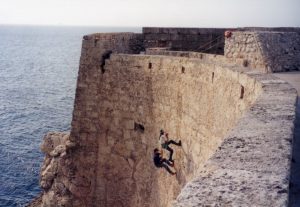 Read more
Read moreAs happens in most majority-poor countries dominated by authoritarian regimes, foreigners in Cuba often enjoy far more freedom than local citizens. To anyone familiar with Fidel Castro’s prior claims to have created the most anti-imperialist, socially just, and therefore “freest” ...
- THE SHOES OF DON TOMÁS
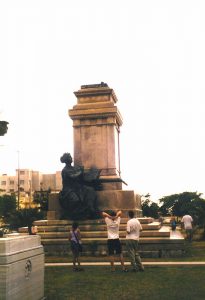 Read more
Read moreOn a single night in 1961, the Cuban Communist Party carried out a “lightning operation” that physically removed all evidence from Havana’s iconic monuments of what leaders considered Cuba’s imperialist past. Famous examples included the toppling of the massive brass ...
- THE MYTH OF CUBA’S GRATEFUL INDIAN
 Read more
Read moreWhether applied to its native people or the descendants of enslaved Africans, a long-standing fiction survives in Cuba that non-whites were deeply grateful to individual whites, as this monument argues, or whites in general, for having “saved them” from either ...
- 100 SHADES OF BROWN
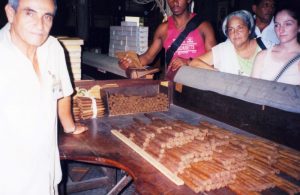 Read more
Read moreAs the granddaughter of Agustín Guerra, an orphan who worked as a field hand until he could establish a tobacco farm of his own in the 1920s, I confess to loving Cuba’s exquisite cigars—even though my father, Agustín’s son, cringed ...
- “ART IS A WEAPON OF THE REVOLUTION”
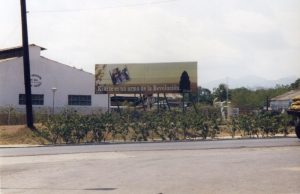 Read more
Read moreFirst announced by Fidel Castro in 1967, what might have been a mere off-the-cuff remark in any other context quickly became a decades-long policy and slogan that demanded adherence from all artists, writers, and cultural workers. Left up to the ...
- An Enslaved Mason’s Ingenuity
 Read more
Read moreIn June 2001, my students and I visited El Ingenio Carolina, a sugar plantation founded in 1835 by slave-owner and foreign investor William Hood Clemens. Fancying the use of an enslaved labor force a premier example of American ingenuity, Hood ...
- Unleashing Love for Dogs
 Read more
Read moreEncountering Cubans out for a stroll with their unleashed (and not always friendly) dogs remains a hallmark of my many visits to Cuba in the 1990s. The proud owner of twin Chinese pugs myself, I could not fathom how I ...
- Forgotten Origins of Wifredo Lam
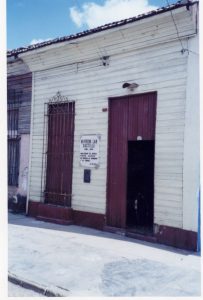 Read more
Read moreFew admirers of the world-famous surreal, modern art of Wifredo Lam (1902-1982) have visited his impoverished childhood home, just a block from the central plaza of Sagua la Grande, a once prosperous provincial city. When I made the journey in ...
- Real or Fake?
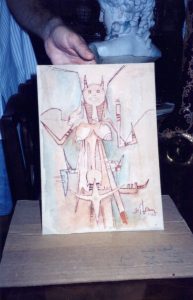 Read more
Read moreAs often happened during the Special Period (and, to a certain extent, continues even today), towns, historical sites, and cities like Sagua la Grande that prove off-the-beaten-path for most tourists brimmed with antiques and curiosities that local people often happily ...
- Casino Chong Gua
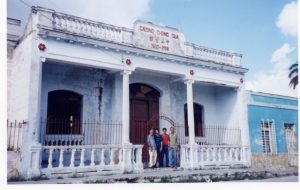 Read more
Read moreFor nearly three decades, slave-owning planters had supplemented their enslaved labor force with Chinese indentured servants. However, the use of the term “servant” and the conditions of their contracts proved to be lies. Deceived into traveling to Cuba for what ...
- Dupont Mansion at Varadero
 Read more
Read moreIn recent years, this once pristine area of Varadero Beach has been overrun by the Cuban government’s joint venture schemes with China to develop luxury rentals and even a golf course next to the shoreline. When I first visited, however, ...
- RELIC OF THE PAST?
 Read more
Read moreIn the 1940s and early 1950s, during Cuba’s short-lived democratic age, Cuban sugar workers achieved major labor demands from an elected government. These included not only the legalization of negotiated union contracts but also government mediation of strikes. For permanent ...
- HOW TO MAKE A HERO OUT OF A SLAVE OWNER
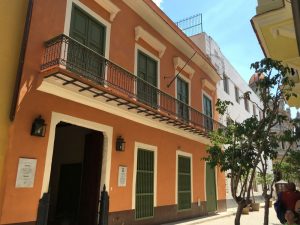 Read more
Read moreIn Cuba, as elsewhere, the invisibility of sugar’s labor-intensive production was always intrinsic to the profits driven first by slaves and later by an underpaid and overly exploited workforce. However, no other sugar island consumed more human lives through the ...
- Better than Bulgarian
 Read more
Read moreLike most Cubans, my elderly cousins Teresita and Pilar remembered how they had once taken for granted the centrality of products from Spain to Cuban cuisine—such as olives or cumin—before what they abstractly called “El Desastre” . Wine, however, ...
- Begging for rides
 Read more
Read morePerhaps the most common sight of the Special Period was that of Cubans standing or sitting for hours alongside city streets and highways, waiting for someone to give them a ride. Most cared little about the conditions. They were often ...
- The Ingenio Brunet
 Read more
Read moreUnlike Southern planters in the United States, Cuba’s “sugarocratic” elite of the eighteenth and nineteenth century considered living too close to the source of their wealth—that is, the daily violence reaped on slaves in sugar plantations—was demeaning. The German-Cuban Brunet ...
- El Valle de los Ingenios [The Valley of the Sugarmills]
![El Valle de los Ingenios [The Valley of the Sugarmills]](https://cubanstudies.history.ufl.edu/wp-content/uploads/sites/173/4-Valle-de-los-Ingenios-Resized-300x193.jpg) Read more
Read moreA reference to the industrial nature of sugar production that arose from the late eighteenth to the mid-nineteenth centuries, the central lowlands of Cuba generated wealth for slave-owning planters on a scale that rivaled the monarchs of Europe. In ...
- Palace no more
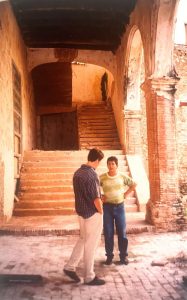 Read more
Read moreUntil the late nineteenth century, few Cuban sugar barons could challenge the Iznaga clan’s fortune, nor the family’s legendary propensity to spend it on exorbitant decorations and lavish furnishings of the highest quality and design, mostly acquired in Europe. Their ...
- Not your average congrí
 Read more
Read moreMost fans of the Cuban cuisine that South Florida’s restaurants serve know the staple of rice cooked with black beans— and onions, garlic, cumin, and herbs as moros y cristianos . Apparently established when Cuban exile cooks from ...
- “Cuban horse-drawn taxi”
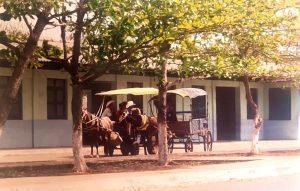 Read more
Read moreIn Havana, the return of horse-drawn buggies accompanied the rise in tourism as the primary source of income for the Cuban state: bouncing around on the back of a fancy one in Old Havana cost up to $25 for less ...
- “La Popa”
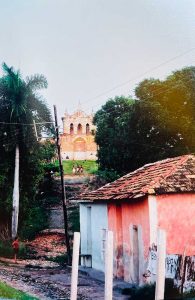 Read more
Read moreBuilt in 1716, the baroque façade of the Shrine of the Virgen of Candelaria and its location at the top of a hill overlooking the ancient town of Trinidad de Cuba bears witness to its once majestic past. Permanently closed ...
- “Its love chose me” [Su amor me escogió a mí]
![“Its love chose me” [Su amor me escogió a mí]](https://cubanstudies.history.ufl.edu/wp-content/uploads/sites/173/1Hawk-Lady-2001-1-212x300.jpg) Read more
Read moreIn the summer of 2001, my students and I stopped near the town of Cruces to tour the ruins of El Ingenio Santa Catalina, a nineteenth-century sugar plantation. At the height of slavery, its managers famously used homing pigeons to ...
- The Saga of Elián González in Cuba
 Read more
Read moreFrom November 1999 until June 2000, the story of five-year-old Elián was inescapable news in the United States. Rescued by fishermen from an innertube on Thanksgiving Day after his mother died while fleeing Cuba, the boy became the focal point ...
- Signs of the Times
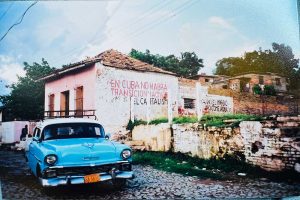 Read more
Read morePrior to the 1990s, triumphalism characterized most Cuban state propaganda. Self-congratulatory statements and predictions of Communist victories once universally pocked the landscape. However, after billions of dollars in annual aid disappeared along with the Soviet Union, messages on billboards and ...
- “The Phoenix”
 Read more
Read moreIn 1961, the Cuban government took over and expropriated the property of all Black mutual aid societies and social clubs, despite the critical role they played in representing the interests, history, and outlook of Black Cubans independently of white structures ...
- Door to the past and present
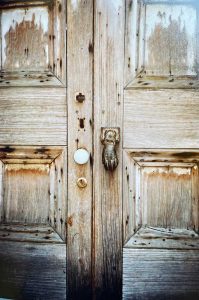 Read more
Read moreAs residents of a UNESCO World Heritage Site, trinitarios were able to remain in their homes rather than face forced relocation to settlements on the edge of the city as thousands of residents of Old Havana endured in the 1990s. ...
- Historians in action
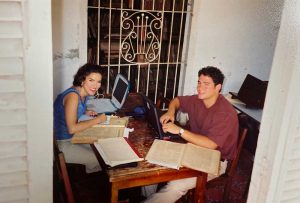 Read more
Read moreFor a little more than a month in the summer of 2001, I traveled to the Colonial Archive of Trinidad with Dr. Marial Iglesias Utset, now of Harvard University and then a professor at the University of Havana’s Department of ...
- WOMEN’S WEAVING COOPERATIVE
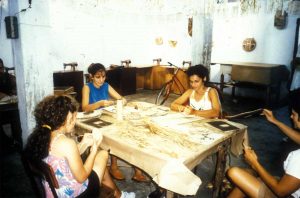 Read more
Read moreIn the early 1990s, many Cubans held out hope that small-time, artisanal businesses and state cooperatives like this one might thrive under the double barrier to neoliberal capitalism that the Cuban Communist Party’s monopoly on economic control and the ...
- HOMEGROWN COFFEE READY TO TOAST
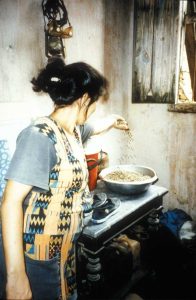 Read more
Read moreUnlike most coffee consumed in Cuba since the 1960s, this coffee is 100% pure because it was homegrown by peasants who then roast it for bartering and personal use. So if there is great, homegrown coffee in Cuba, why is ...
- CYCLING TOURS FOR FOREIGNERS
 Read more
Read moreCuba’s dependence on Soviet oil and mostly Soviet-built parts for public transportation vehicles meant that the public transportation on which citizens relied to get to work, school, home or virtually anywhere ground to a near halt from 1991-2000. The state ...